5 disruptive assistive tech start-ups at CES 2023
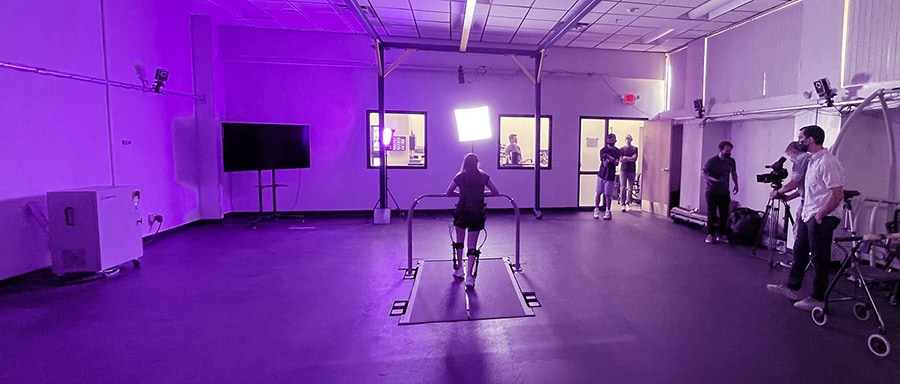
A battery-powered ankle exoskeleton, smart wheelchair cushion that reduces the risk of pressure ulcers, closed-captioning badge that converts speech to text in real time, wearable device that transcribes the environment, and handy glasses that provide captions for conversations in real time have all been showcased at CES 2023.
Taking place annually and organised by organised by the Consumer Technology Association (CTA), the Consumer Electronics Show (CES) is one of the largest global stages for companies to showcase their latest and greatest technology innovations. The show covers a wide variety of sectors including automotive, robotics, gaming, wearables, sports technology, and accessibility.
CES showcases some of the latest and greatest assistive technology innovations.
One way for pioneering accessibility start-ups to showcase their new solutions for free at CES is by entering CTA Foundation’s Eureka Park Accessibility Contest.
The contest gives US- and Canadian-based start-ups the chance to be one of five winners to receive a complimentary booth at CES in Eureka Park, the show’s flagship start-up marketplace, along with a $2,500 prize.
At CES 2023, five Eureka Park Accessibility Contest winners revealed how their technologies enhance the lives of older adults or people with disabilities. Their solutions had to be new to market, innovative, and impactful, among other entry requirements.
Find out more about each of the five disruptive accessibility winners, and their latest assistive technology innovations, from the CES 2023 Eureka Park Accessibility Contest below.
1. Spark by Biomotum
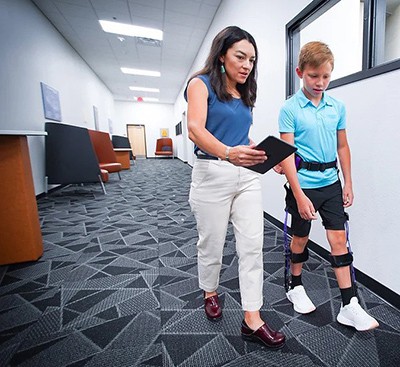
Biomotum’s Spark is a battery-powered, flexible ankle exoskeleton designed to provide ankle joint assistance or resistance during daily walking activities for older adults with neurologic or orthopaedic conditions.
The robotic device claims to be highly effective at assisting and restoring walking function when compared to conventional approaches.
Biomotum Spark is designed to equip physical therapists with an intelligent, precise training platform to assist and restore patient function, helping them achieve their goals, and improve outcomes.
The exoskeleton can be used by people with a range of individuals who might require rehabilitation, such as a people who are recovering from a stroke, those with cerebral palsy, or those with neurological conditions.
2. Orbiter Smart Cushion by Kalogon
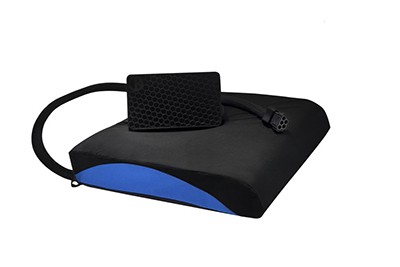
Kalogon’s Orbiter Smart Cushion is a wheelchair cushion that detects and targets pressure ulcer causes and provides weight shifts and pressure relief to reduce the risk of pressure injury.
Using intelligent redistribution technology, the Kalogon Orbiter eliminates direct pressure on sensitive areas to not accelerate the healing process of pressure ulcers and prevent new injuries from occurring. This technology is designed to increase seating tolerance, allowing users to live an active, seated lifestyle.
Users can manage their cushion comfort and stability preferences via a dedicated accompanying smartphone iOS or Android app.
3. Badger by Satellite Displays
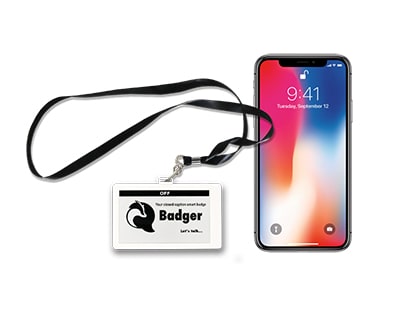
Satellite Displays’ Badger is a closed captioning smart badge that is used to convert speech to text in real time in more than 50 languages.
It helps those with hearing loss follow conversations more easily when the other person is wearing the Badger badge, especially in circumstances where lip reading is impossible if the person speaking is wearing a face mask, such as in healthcare settings.
The wearable badge first captures the speaker’s voice and transmits it to a smartphone. Next, the smartphone converts the audio to text and transmits it to the smart badge. The smart badge then displays the text like closed captions.
4. Ara by Strap Technologies
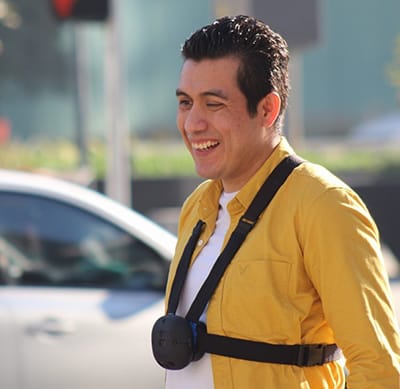
Strap Technologies’ Ara is a wearable, hands-free device with sensors that transcribes the environment, providing blind or visually impaired users with support to move faster and safer throughout their everyday lives.
Ara’s sensors gather real-time information from the wearer’s surroundings (head, chest, and below the waist), warning them about potential hazards via haptic feedback. Ara’s main features (obstacle detection and straight line navigation) communicate to the user through haptic feedback. It has a sequence of vibrations specific for each situation.
The assistive device cleverly adapts to the wearer’s walking speed; if the user is walking quickly, the technology will detect potential obstacles from further away.
According to Strap Technologies, Ara decreases the probability of accidents up to 80 percent due to undetected objects.
5. Xander Glasses by Xander
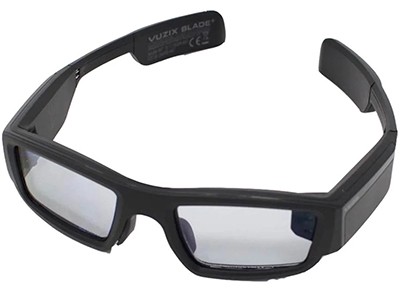
Xander’s Xander Glasses are smart glasses that provide real-time captions for conversations in real-time to help individuals with hearing loss.
The lightweight smart glasses show captions unobtrusively, allowing the wearer to follow conversations while looking directly at the speaker and surroundings.
Xander Glasses allow people who are hard of hearing to clearly understand who is speaking to them, whether at home, work, or in a noisy public venue. This helps people feel more confident and relaxed during conversations.
Users can choose where they want the captions to be displayed on the glasses. As the captioning technology is built into the glasses, users do not have to rely on having internet connection or their smartphone.

